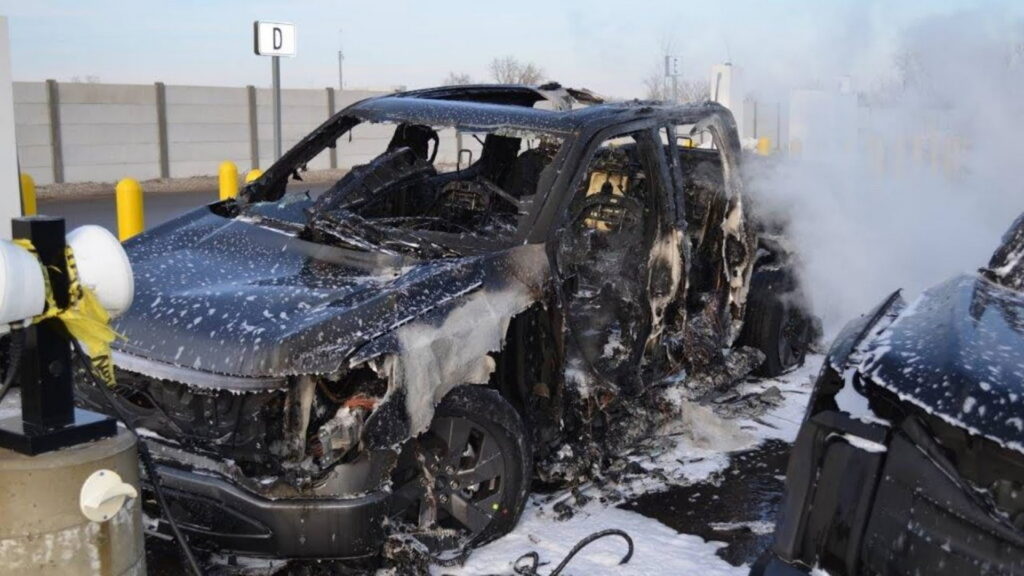Newly released police bodycam footage has revealed dramatic images of three melted Ford F-150 Lightning pickup trucks, which burned to a crisp while on a pre-delivery lot in Dearborn on February 4th. The incident had led to a five-week shutdown of Lightning production and deliveries.
Ford initially remained tight-lipped about the cause of its production and delivery pause for the F-150 Lightning. It was later revealed that a single-vehicle fire was at the heart of the concern. However, by the end of February, the issue was traced back to a problem that originated at battery supplier SK On.
The Detroit carmaker called the problem a rare occurrence and recalled 18 trucks with suspect battery cells. Today, a new video is showing just how serious a concern a battery fire can be. Initially obtained by CNBC through a Freedom of information act request, the video shows officers arrive and react to the initial fire.
More: Ford Brings F-150 Lightning To Norway After Customers Literally Begged For It
“There was only one [vehicle on fire] when we got here. They’re catching. It’s these frickin’ batteries,” a responding officer says. We can hear other statements about how difficult the fire will be to put out. “We’re not putting this f—er out. Look at it,” said another responder. “They have to put like a whole f—ing lake on it to put them out,” the same officer said during the event. The fire burned hot enough and long enough that one vehicle was barely recognizable afterward.
Ford told regulators that its engineering team de-energized the battery and ultimately used computed tomography to determine the ultimate source of the initial fire. Further testing revealed the potential danger for those 18 trucks and that other production units didn’t have the flaw.
“Together with SK On, we confirmed the root causes and swiftly implemented quality actions,” Ford told CNBC in a statement. “The Rouge Electric Vehicle Center has been back up and running since March 13 and is back to full production and shipping vehicles to customers.”
Battery fires are a concern that all EV manufacturers have to remain diligent about. While they’re rarer than fires associated with internal combustion cars, they can be considerably harder to put out. Oftentimes, fires can start when battery cells get damaged in a crash or accident.
“This is a big issue globally,” Michael O’Brian, board member of the International Fire Chiefs Association, who leads fire and life safety told the news stattion. “We need to better understand what the best processes are through testing and evaluation with real firefighters.”
In some cases, production flaws can cause much bigger issues. For example, Chevrolet halted production of its Bolt EV for months as it worked to correct just such an issue.




